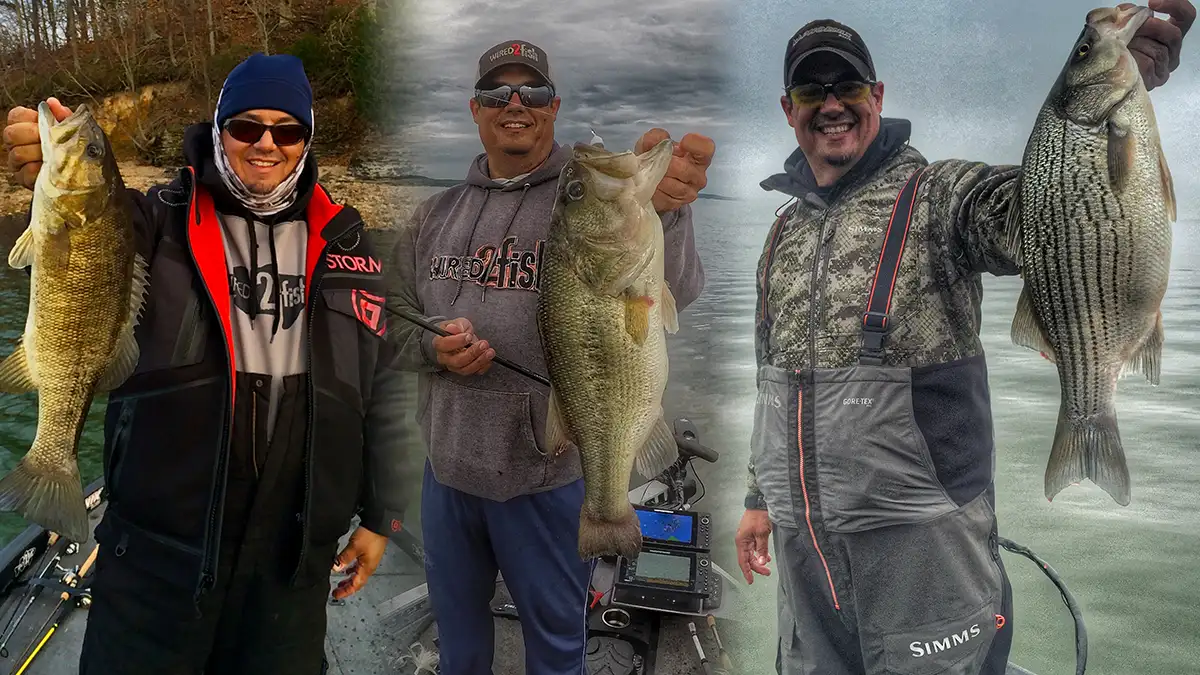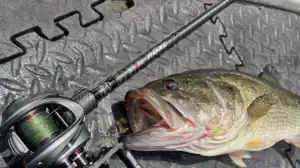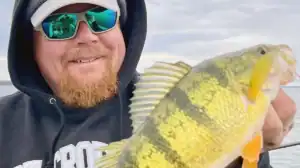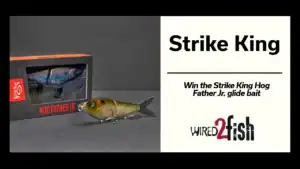Most people get annoyed when the forecast messes up their fishing plans. I, however, get a sly smile when I see certain things setting up in a pattern that seems to bring gloomy weather to the area. As fishermen, we keenly follow weather forecasts to plan our days on the water. But I actually do it a bit differently than others; because I’ve found over the years that the worst weather days often bring the best fishing days.
With fishing, nothing is an exact science, so take all of this with a grain of salt. And I’m certainly not advocating for going fishing with the weather can make conditions on the water dangerous. So don’t read more into this than the broad overview that fish are keenly in tune with the weather even more than we are. Their livelihood depends on it.
There are several things that factor into fishing on bad weather days. And bad weather certainly lies in the eyes of the beholder. What one person thinks is bad weather, another person loves. I’m not particularly a fan of snow, but I can tell you a couple of my best days of fishing in 30 years were during snowstorms. So allow me to make a case for it here.
The following factors affect what can make a bad weather day a good fishing day:
- Low Pressure
- Less Angling Pressure
- Low Light Concealment
- Longer Feeding Window
- Shallow Access
I’ll explain how bad days maximize each one of these advantages for anglers regardless of species.

Low Pressure
When storms move into an area, the barometric pressure drops. This drop in pressure often triggers game and fish to feed before the impending weather event. So when a storm is rolling in can be a great time to catch fish. Obviously the weather can get violent and you should not venture out in if it’s full of lightning and gusty winds that make navigating dangerous. But approaching fronts can offer some of the best fishing experiences.
As the front gets there the pressure will be at its lowest and that can make for good fishing. I’ve had days where the front brought calm conditions with the rain and actually made for some pleasant fishing with good rain gear.
One of the best days of fishing I’ve ever had was in a pre-spawn snow and sleet storm. The wind laid down and it was mostly calm, albeit barely above freezing. But the water had warmed the week before and the drop in pressure had the fish chewing. We caught a limit of bass weighing north of 25 pounds on shallow crankbaits on our first pass through a good stretch of chunk rock 45 degree banks. We doubled back and made another pass and caught several more quality bass between 3 to 6 pounds with the deck of the boat covered in sleet.
Less Angling Pressure
When weather is moving in, a lot of anglers avoid or leave the water. This gives you a lot of water to enjoy alone. I have had some of my most memorable days of fishing, seemingly having a huge lake all to myself on those bad weather days. The ability to move around and try lots of different areas alone can make for a great fishing day.
A lot of people will not fish in the rain. And a lot of people will not even go to the lake if they know it’s going to rain later that day. The same goes for windy days. But I’ve found if you plan your approach to fish areas shielded from the wind, you can have some great fishing all to yourself.
These are also the days where I like to bank fish. I feel like with less pressure, low light and rain offering some concealment there are more fish to be had shallow.
Low Light Concealment
Most predatory game fish are most active in lower light conditions. And a lot of bigger fish will go nearly completely nocturnal. On overcast, stormy days, however, a lot of those big fish will feed shallow, sensing there are less predators (namely anglers) out and they are easily able to forage shallow with the darker conditions.
I have had deep bites disappear as storms rolled in and had shallow bites that shouldn’t be happening appear in minutes with the changes in weather. That low light means you can be more aggressive with your presentations as well. You can often use baits that cover water and fish a bit faster for more aggressive fish looking to capitalize on the new conditions.
Longer Activity Windows
Those weather days can also offer a lot longer feeding activity — especially in warmer months. The cloud cover and subsequent reprieve from the heat provide more opportunities for fish to move shallow and feed more. That means you can cover a lot more water and take a bit more time instead of trying to capitalize early and late in the day when natural activity levels in bait, bugs and such increase.
And warm runoff from rains can actually provide more opportunities for several days afterward. I am a fisherman who gets excited when rains warm and dirty up shallow water. I actually think fishing can get a lot better when clear water is exchanged for a lot less visibility. It can turn finesse requirements into power fishing in hours. And give you some improved fishing for a lot longer period.

More Shallow Opportunities
The biggest thing I’ve found on those dark and gloomy days is how much fish will move into shallower feeding areas.
These are best explained from some anomaly fishing days in the winter. Years ago on a clear water impoundment in Arkansas, I was fishing on a cold winter day not having much luck. While it was cool, it was a lot warmer than it had been that week as an approaching snow storm made its way.
What I thought was going to be a dusting turned into a giant snowflake-filled blizzard. With my boat covered in giant snowflakes that were thankfully melting after a few minutes on the deck, I hammered bass after bass on a Storm Wiggle Wart. The smallmouth, spots and largemouth were all up on the banks foraging and the bite was red hot in water less than 6 feed deep in the heart of winter.
Last year I was fishing on a cold winter day barely above freezing. A front was blowing in and I was hoping to put a bunch of bluegills in the livewell before the storm hit. The wind got up and the air temp actually warmed up quite a bit. I got to thinking it felt like good smallmouth weather.
I put my ultralight rods away and pulled out a swimbait rod with a 3/4 ounce swimbait head and a DUO Realis Versa Fat 5-inch swimbait on it. I started working some areas and finally pulled up on a shallow hump in a bay. I lobbed the swimbait up into 3-4 feet of water and started reeling it back.
It was immediately clobbered and I wrestled a 4 1/2 pound smallmouth into the boat. I was jacked, took a few pics and threw the fish back before firing another shot up to the bank. I barely got my reel handle turning and I was locked up on another big smallmouth.
I managed to land 6 quality smallmouth bass in a few feet of water that was in the mid 40s on a day that had previous been just barely above freezing. That front pushing in, albeit it challengingly windy, provided a flurry of shallow fishing for some big smallmouth bass. After having multiple experiences with smallmouth on ugly days, I’ve come to realize, they crave the ugly days as much as I do now.
Again let me be clear, I’m not advocating for anglers to get out and fish in unsafe conditions. But I am advocating that you not let a little weather scare you away from what could potentially be some of your best fishing of the year. I think realizing that the fish actually benefit from the conditions created on those gloomy days, and you, as an angler, can too.










